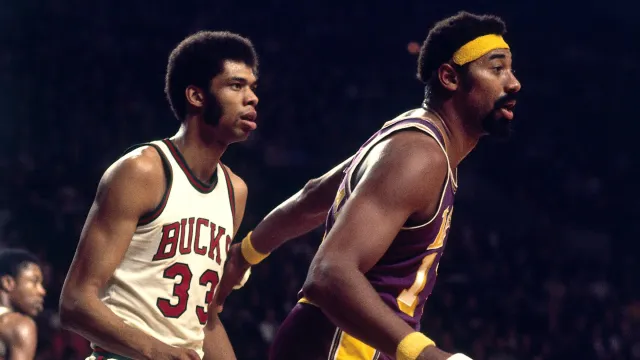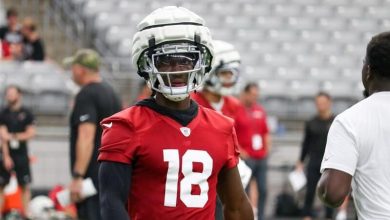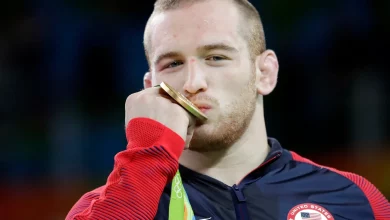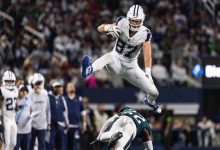On January 9, 1972, Kareem Abdul-Jabbar scored 39 points and grabbed 20 rebounds, leading the Bucks to a 120-104 win over the Lakers, ending their 33-game streak.

On January 9, 1972, a significant moment in NBA history unfolded at the Milwaukee Arena, where Kareem Abdul-Jabbar, then known as Lew Alcindor, delivered a masterful performance that would be remembered by basketball fans for decades to come. Facing off against the Los Angeles Lakers, the reigning champions and on a remarkable 33-game winning streak, Abdul-Jabbar’s outstanding contributions of 39 points and 20 rebounds propelled the Milwaukee Bucks to a decisive 120-104 victory, effectively ending the Lakers’ historic run. This game not only showcased Abdul-Jabbar’s dominance on both ends of the floor but also marked a pivotal moment in his career and the league’s history, highlighting his evolution as an unstoppable force and the rising prominence of the Bucks as a competitive powerhouse.
To fully appreciate the significance of this game, it is important to contextualize the landscape of the NBA during the early 1970s. The Los Angeles Lakers, led by legendary players such as Wilt Chamberlain, Jerry West, and Gail Goodrich, had established themselves as a dominant team with a potent combination of talent, experience, and strategic prowess. Their 33-game winning streak, which spanned from late 1971 into early 1972, was a testament to their consistency, skill, and relentless pursuit of excellence. Such a streak was extraordinary in NBA history, reflecting a team that was nearly invincible and capturing the imagination of fans and analysts alike.
Meanwhile, the Milwaukee Bucks, a relatively young franchise founded in 1968, were on the rise, showcasing the remarkable talent of Lew Alcindor, who had recently changed his name to Kareem Abdul-Jabbar after converting to Islam. Standing at 7 feet 2 inches tall, Abdul-Jabbar was already establishing himself as one of the most skilled and dominant centers in the league. His signature “skyhook” shot was nearly impossible to defend and became a symbol of his scoring prowess. Under the guidance of head coach Larry Costello, the Bucks were building a formidable team, with players like Oscar Robertson and Bob Dandridge providing veteran leadership and scoring ability.
The game on January 9, 1972, was more than just a regular-season contest; it was a showdown between two elite teams, each with their own aspirations and legacies. For the Lakers, maintaining their winning streak was a matter of pride and dominance, while for the Bucks, defeating an undefeated Lakers team presented an opportunity to establish themselves as serious contenders and to challenge the Lakers’ supremacy. The matchup was highly anticipated, drawing attention from fans, media, and basketball enthusiasts eager to witness a clash of titans.
From the opening tip-off, the game showcased intense physicality, strategic execution, and individual brilliance. Abdul-Jabbar’s performance was nothing short of exceptional. His 39 points came on efficient shooting, often utilizing his signature skyhook that frustrated Lakers defenders. His ability to score in the paint, combined with his soft touch and footwork, made him a nightmare for opponents. Beyond scoring, Abdul-Jabbar’s 20 rebounds underscored his dominance on the boards, providing the Bucks with extra possessions and limiting second-chance opportunities for the Lakers. His presence in the paint altered the Lakers’ offensive strategies, forcing them to adapt and open up scoring opportunities for his teammates.
Defensively, Abdul-Jabbar was a formidable force, anchoring the Bucks’ defense and challenging Lakers’ shooters and drivers. His timing and shot-blocking ability contributed to limiting the Lakers’ scoring chances. The Lakers, despite their talent, found it challenging to contain him, and his relentless effort on both ends of the floor set the tone for the Bucks’ overall performance. The game was a showcase of his versatility and evolving skill set, demonstrating why he was destined to be one of the greatest players in NBA history.
The Bucks’ supporting cast also played crucial roles. Oscar Robertson, the legendary point guard, orchestrated the offense with his court vision and leadership, setting up scoring opportunities for Abdul-Jabbar and others. Bob Dandridge contributed with timely baskets and defensive stops, complementing Abdul-Jabbar’s dominance. The team’s cohesion and strategic execution allowed Milwaukee to take control of the game and build a lead that would withstand Lakers’ attempts at a comeback.
The Lakers, on the other hand, fought valiantly but struggled to contain Abdul-Jabbar’s scoring and rebounding. Wilt Chamberlain, who was nearing the end of his illustrious career, tried to match Abdul-Jabbar’s physicality but was often outmatched due to Abdul-Jabbar’s agility and skill. The Lakers’ offense was primarily focused on West and Goodrich, but they lacked the firepower and cohesion to overcome the Bucks’ disciplined defense and Abdul-Jabbar’s offensive onslaught. As the game progressed, the Lakers’ hopes of extending their winning streak diminished, and Milwaukee capitalized on their momentum.
The final score of 120-104 reflected the Bucks’ comprehensive victory, breaking the Lakers’ 33-game winning streak and marking a turning point in the season. This game not only demonstrated Abdul-Jabbar’s rising stature as a dominant player but also signaled a shift in the league’s competitive landscape. The Bucks, previously considered a playoff contender, now showcased that they could compete with and defeat the league’s best, setting the stage for future successes.
This game also had lasting implications for Abdul-Jabbar’s career. His performance reinforced his status as an unstoppable offensive force and a key player for the Bucks’ championship ambitions. It was a statement game that elevated his reputation among fans, teammates, and opponents. Over the years, Abdul-Jabbar’s skill, consistency, and leadership would be recognized as instrumental in Milwaukee’s success and in shaping the future of the NBA.
Furthermore, the victory over the Lakers had a psychological impact on both teams. For the Lakers, it was a wake-up call, emphasizing the need to tighten their defense and team chemistry to defend their title successfully. For the Bucks, it boosted confidence and validated their strategy of building around Abdul-Jabbar’s unique talents. It also helped solidify the Bucks’ identity as a formidable team capable of competing with the league’s elite.
In the broader context of the NBA, this game stands out as a classic example of the importance of individual excellence combined with team effort. Abdul-Jabbar’s performance exemplified how a single player can influence the outcome of a game and shift perceptions about team strength. It also highlighted the evolving nature of the league, where dominant centers like Abdul-Jabbar, Chamberlain, and later Shaquille O’Neal and Dwight Howard, played pivotal roles in defining team success.
Looking back, the game on January 9, 1972, remains a memorable milestone in NBA history. It encapsulates the emergence of Kareem Abdul-Jabbar as a transcendent player, capable of taking over games and leading his team to victory against the best competition. It also signifies the resilience of the Milwaukee Bucks, who, under Abdul-Jabbar’s leadership, proved they could topple a historically great Lakers team and end their winning streak. Such moments continue to inspire basketball fans and serve as a testament to the enduring appeal of the sport, where individual brilliance and team effort intertwine to create unforgettable moments on the court.
In conclusion, the game on January 9, 1972, was more than just a regular-season contest; it was a defining chapter in NBA history, showcasing Kareem Abdul-Jabbar’s growing dominance and the Bucks’ rise as a serious title contender. His 39 points and 20 rebounds led the Bucks to a convincing victory, ending the Lakers’ 33-game winning streak and cementing his legacy as one of the game’s all-time greats. This moment remains a symbol of excellence, perseverance, and the unpredictable excitement that makes basketball a beloved sport worldwide.









